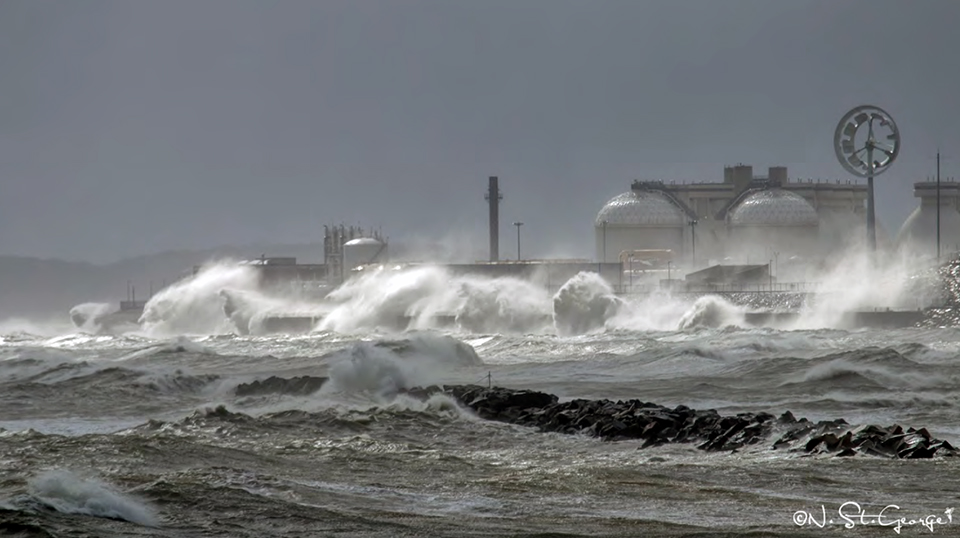Updated August 10, 2022
PDF files on this site require Adobe Acrobat Reader (free download)
|
Massachusetts Water Resources Authority
 The Deer Island Treatment Plant was designed to withstand rising sea levels MWRA has closely followed the evolving science of climate change over the past few years with the goal of fully understanding potential impacts to MWRA facilities and operations. MWRA has a pragmatic approach to climate change adaptation. Efforts have focused on the evaluation and implementation of measures to allow MWRA facilities to withstand a significant storm event that could occur in Eastern Massachusetts. Presentation: The good news is that evaluations of the impact of climate change on the water supply system indicate that the design and inland location of MWRA’s source reservoirs, Quabbin and Wachusett, should not be adversely affected. Safe yield will likely increase slightly, while many neighboring communities will see reductions in reliability due to the more variable future precipitation patterns. MWRA will be able to provide both emergency and regular supply to more surrounding communities in the future. Also, the design of the Deer Island Wastewater Treatment Plant incorporated anticipated sea level rise. Deer Island is designed to survive a direct hit from a Category 3 hurricane with minimal damage limited to support systems only with no flooding in the Deer Island process areas. The plant was designed for a 100-year storm event plus two feet of sea level rise. Even with the newer FEMA maps, Deer Island’s design and operations will not be impacted by flooding. During design, plant process tanks were raised almost two feet, and the outfall was increased from 24 to 24.5 feet in diameter to accommodate sea level rise without reducing the plant capacity. However, MWRA staff have evaluated the potential impacts of sea level rise on 30 coastal or near coastal wastewater and administrative/operational facilities. Thirteen facilities were determined to be within the most recent 100-year flood elevation as set by the Federal Emergency Management Agency (FEMA) or to be conservative, within one foot above 100-year elevation. MWRA regularly assesses facilities and equipment for repair and rehabilitation needs. After Super Storm Sandy in October 2012, staff began an evaluation of coastal facilities to understand each facility's ability to withstand such a storm were it to make landfall in the Boston area. The most current information available on climate change scenarios and sea level rise has been and will continue to be incorporated into design and construction contracts to ensure hardening against potential impacts. Raised platforms prevent equipment damage Significant facility renovations at MWRA’s Alewife Brook Pump Station and Chelsea Creek Headworks incorporate mitigation measures for the most recent FEMA 100-year flood elevation and sea level rise projection information. The recently completed Chelsea Creek Screenhouse, Alewife Brook Pump Station and Chelsea Creek Headworks included physical modifications to address sea level rise and flooding. Doorway stop log protects facilities from potential flooding Where major work is not occurring in the short-term, staff have identified immediate needs for flood proofing improvements such as raising equipment up off of floors and installing stop logs at doorways. Updated August 10, 2022 PDF files on this site require Adobe Acrobat Reader (free download) |